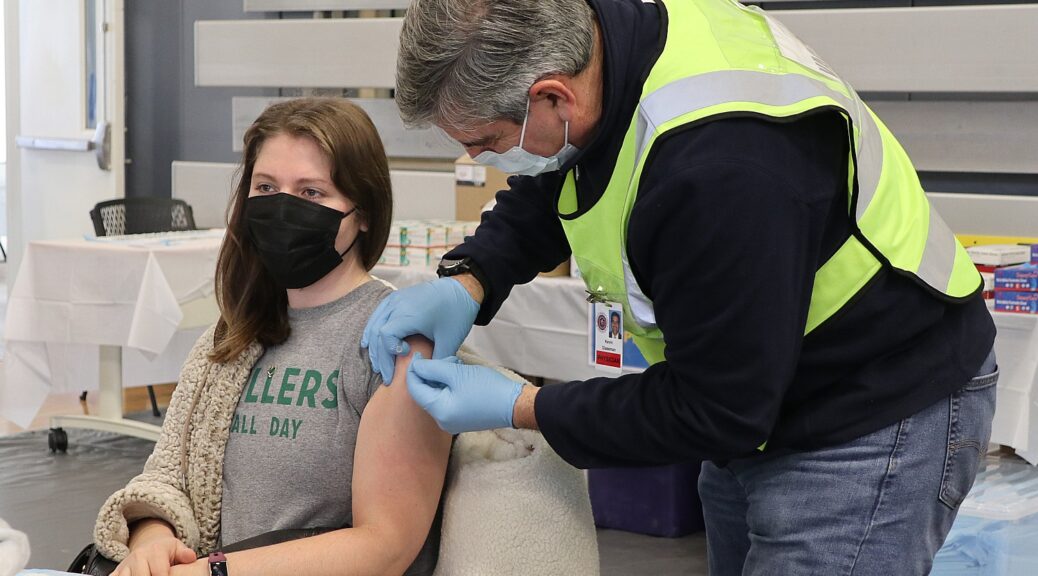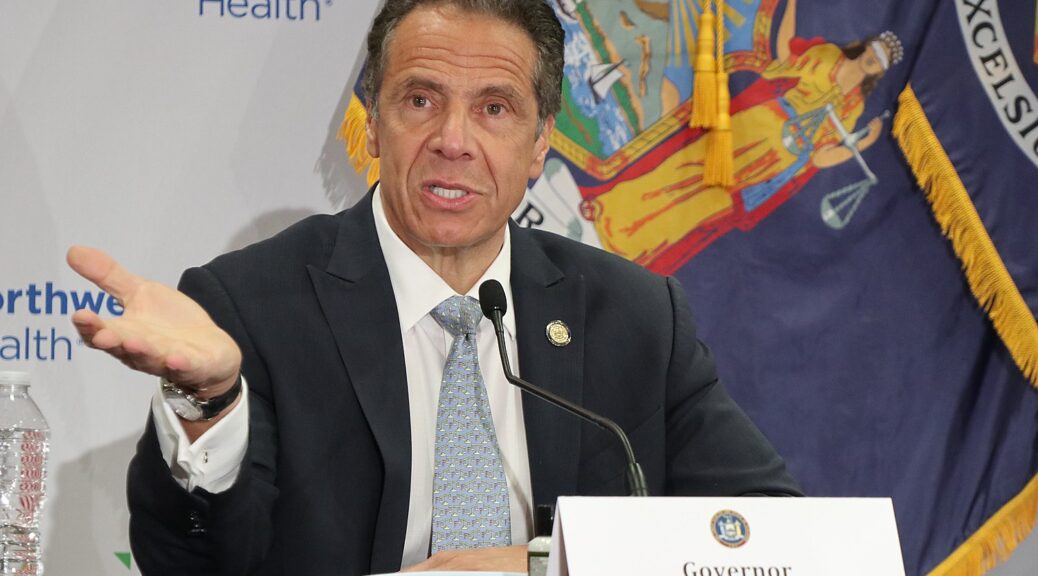
This is a fact sheet from the White House detailing the Biden Administration’s commitment to advancing global health:
The United States Government is proud to be the largest donor for global health. As we work to end the COVID-19 pandemic, we remain committed to strengthening health systems and institutions; advancing global health security; combatting HIV/AIDS, malaria, and tuberculosis; advancing sexual and reproductive health and rights, and maternal, neonatal, and child health; closing gaps in nutrition and non-communicable diseases; and accelerating efforts towards universal health coverage and the Sustainable Development Agenda. In Fiscal Year (FY) 2021, the United States appropriated over $9 billion in global health programs, in addition to almost $16 billion in emergency supplemental funding for COVID-19.
We continue to lead the global community toward a safer, more equitable future. Over the last year, the Biden-Harris Administration has renewed the U.S. leadership in global health, and taken decisive steps to advance global health priorities, including:
- Supporting and strengthening the WHO. Among his first acts in office one year ago, President Biden declared the United States would reengage with the World Health Organization (WHO), highlighting our nation’s commitment to advancing multilateral cooperation in a time of international health crisis. Last week, the United States once again demonstrated that commitment, by leading a successful decision at the WHO Executive Board meeting to strengthen the International Health Regulations (2005). This strengthening will enhance the world’s ability to prevent, detect, and rapidly respond to infectious disease outbreaks in the future. Beyond COVID-19, the United States is collaborating with global partners through WHO on a wide range of global health challenges such as childhood immunization, nutrition, polio eradication, strengthening the global health workforce to achieve universal health coverage, and tackling the threat that climate change poses to health. These and other issues remain critical priorities, especially in the wake of COVID-19, and demonstrate the importance of strong, equitable health systems that serve those most at risk.
- Leading the global COVID-19 response. Under President Biden’s leadership, the United States has committed to donate 1.2 billion doses of safe and effective vaccine to the world, more than any other nation. To date, we have shipped over 400 million of those vaccines to 112 countries around the world, all for free, with no strings attached or promises extracted. We were the first nation to purchase doses solely for the purpose of donation, with the historic purchase of 1 billion doses of Pfizer vaccine. We were the first nation to step out of the queue for Moderna vaccines, allowing the African Union quicker access to tens of millions of doses. We were the first to broker access to doses for individuals in humanitarian crises. And now, we are leading the push to turn vaccines into vaccinations, with the creation of the Global Vaccine Initiative. To date, the United States is providing nearly $16 billion for life-saving health, economic, and humanitarian COVID-19 assistance to our partners to fight this virus and its impacts. These funds are delivering shots in arms, lifesaving supplies to hospitals, and support that reaches the most vulnerable communities.
- Advancing sexual and reproductive health and rights. One of President Biden’s first actions was issuing a Presidential Memorandum on Protecting Women’s Health at Home and Abroad, which revoked the expanded Mexico City Policy and directed agencies to resume funding to the United Nations Population Fund (UNFPA) in support of its essential work to prevent maternal deaths, expand access to voluntary family planning, and prevent and respond to gender-based violence around the world. The Administration continues to advance sexual and reproductive health and rights (SRHR) for all in the face of continued threats. The White House Gender Policy Council released the first-ever National Strategy on Gender Equity and Equality, which emphasizes the core role of advancing SRHR to achieve gender equality. As the largest bilateral donor to family planning, the United States also leads globally by advancing SRHR in multilateral fora and with bilateral partners. As we address the indirect impacts of the COVID-19 pandemic on health systems and vulnerable populations, the United States has supported increased access to SRHR services, particularly in emergency contexts.
- Continued global leadership on addressing HIV/AIDS, malaria, and tuberculosis. Last week, the U.S. President’s Emergency Plan for AIDS Relief (PEPFAR) celebrated its nineteen-year anniversary. Since its inception and with bilateral support, the U.S. Government has invested $100 billion to transform the global AIDS response. PEPFAR has saved more than 21 million lives, prevented millions of HIV infections, and helped countries build a strong foundation to prevent, detect, and respond to other health threats, including COVID-19. Across 55 countries, PEPFAR invests over $1 billion annually in local health systems strengthening to respond to HIV. At the end of FY21, PEPFAR supported 63.4 million people with HIV testing services, and 18.96 million people with antiretroviral treatment. With $250 million in funding through the American Rescue Plan Act, PEPFAR has continued to advance HIV gains and supported the global COVID-19 response. The U.S. President’s Malaria Initiative invested $770 million in 2020 to forge forward in the fight against malaria, despite the COVID-19 pandemic, reaching almost 60 million people with malaria medicine and protecting more than 7.5 million pregnant women with preventive treatment for malaria. Through the most recent five-year U.S. Government Global TB Strategy, U.S. government investments led to the treatment of 15.7 million people with TB, starting 438,000 individuals with drug resistant TB on second-line drug therapy, and accomplished a treatment success rate of almost 90 percent.
- Building health security capacities. The United States continues to work with partners across the globe, including 19 intensive support partner countries, to provide assistance to better prevent, detect, and respond to infectious disease threats and to meet the target of the multilateral Global Health Security Agenda. The need for these capacities has never been more clear, and robust interagency efforts helped address numerous outbreaks including Ebola, Anthrax, Influenza, Rabies, Polio, Cholera, and more. The U.S. Government’s global health security programs also pivoted to support critical COVID-19 response activities.
- Sustaining commitments in maternal and child health. The United States’ sustained commitment, financial investment, and adaptability has ensured that critical health services continue reaching women, children, and families. In 2020, the United States helped more than 92 million women and children access essential—and often lifesaving—care. The U.S. Government’s investments towards polio eradication have also helped ensure over 400 million children are vaccinated against polio each year; last year was a significant milestone as Africa was declared wild polio free.
In the coming year, the Administration will take the following steps to continue to advance global health priorities:
- Continue supporting and strengthening the World Health Organization. The United States looks forward to rejoining the WHO Executive Board in May 2022, and will launch a Strategic Dialogue with WHO to ensure our mutual priorities are fully aligned. The United States will continue to work closely with WHO and partners around the world, to ensure that the prevention of sexual exploitation and abuse, and support for victims and survivors, remain priority issues.
- Accelerate global COVID-19 response efforts. The U.S. Government will continue to roll out the Initiative for Global Vaccine Access (Global VAX) to accelerate global efforts to get COVID-19 shots into arms and enhance international coordination. This whole of government effort will bolster cold chain supply and logistics, service delivery, vaccine confidence and demand, human resources, data and analytics, local planning, and vaccine safety and effectiveness. The United States has committed more than $1.6 billion in funding to help get shots into arms around the world.
- Advance health security and pandemic preparedness. The United States will continue to advance health security and pandemic preparedness abroad, including through strengthening WHO, working with partners towards targeted IHR amendments and a new pandemic instrument, building country capacities towards the Global Health Security Agenda target, strengthening sustained financing including establishing a new financial intermediary fund at the World Bank, building back better biosafety and biosecurity norms and mitigating biotechnological risks, innovating our science and technological capabilities to shorten the cycle for development of safe, effect, and affordable vaccines, therapeutics, and diagnostics, and more.
- Continue investments to strengthen health systems. The United States will continue to advance the newly launched Vision for Health System Strengthening and will work to align global partners toward shared commitments for the health workforce. The United States has committed to supporting and protecting health workers, and affirmed support for WHO’s Gender Equal Health and Care Workforce Initiative, which aim to address gender inequities and inequalities health workers face globally. The United States will continue to invest resources and provide assistance to strengthen countries’ disease surveillance and laboratory detection capacities, continue to lead efforts to eradicate polio, and also strengthen immunization systems and vaccine delivery to ensure a world where people live healthier, safer lives.
- Continue championing and expanding sexual and reproductive health and rights. In addition to maintaining strong financial support, the United States will continue to collaborate with allies and partners through multilateral, bilateral and civil society partnerships to expand progress and leadership to advance sexual and reproductive health and rights. Federal agencies are developing SRHR implementation plans and the National Security Council will continue to elevate and expand SRHR as a core component of our global health policy.
- Continue the fight against HIV/AIDS, malaria, and tuberculosis. This year, President Biden will host the Global Fund’s Seventh Replenishment Conference, advancing global efforts to address HIV/AIDS, malaria, and tuberculosis, alongside the U.S. government’s programs. PEPFAR is saving lives and curbing new HIV infections while supporting the health systems infrastructure in countries that continue to serve as a backbone of the COVID-19 response. PEPFAR’s assets can be further leveraged to support the COVID-19 response, while protecting and expanding HIV services and serving the most vulnerable populations around the world. PMI is reshaping its fight against malaria, focusing on reaching the unreached, further building community health systems, and increasing the impact of community health workers as part of its new “End Malaria Faster” Strategy. Current investments are building countries’ capacities to respond to both tuberculosis and COVID-19 with support for bi-directional testing approaches for both diseases, joint contact investigations and community screenings, stigma reduction and community empowerment, and expanding infection prevention and control measures—providing vital platforms to address both diseases and respond to future airborne pandemics.
- Continue demonstrating strong global leadership on nutrition. At the 2021 Tokyo Nutrition for Growth Summit, the United States announced a financial commitment of up to $11 billion over three years to combat global malnutrition. The United States also launched the Global Nutrition Coordination Plan, which will guide the collaborative work of seven U.S. government agencies engaged in scaling up proven approaches to better nutrition.



















